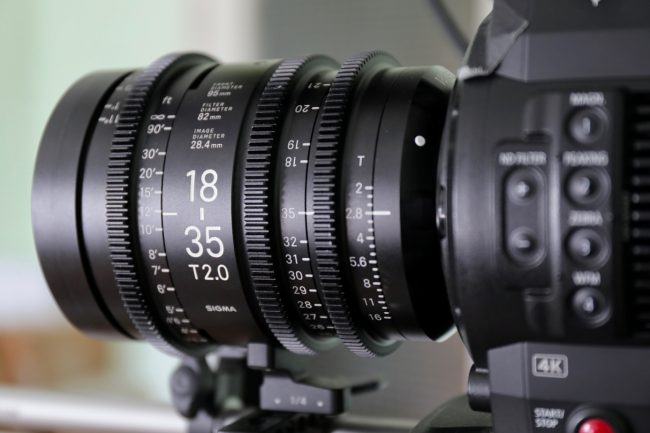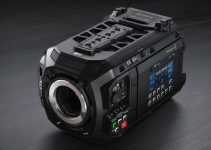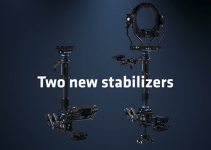What’s it like shooting an indie feature film with one lens? Well, in this post I’ll share my experience using the Sigma 18-35mm T2 EF mount mated to a Canon C300 mark II to shoot an indie feature film.
A couple of months back I got a chance to be a 2nd AC on an indie feature that a good friend of mine directed and produced. It was a whole lotta fun, I learned a ton, and somehow the whole thing felt like a throwback to 2013 when I shot my debut feature film on a single Canon EF-S 17-55m f2.8 IS lens and the original BMCC 2.5K…
However, this time around, the scope of this film was greater, there was a much bigger crew that I was ever used to and we had to make important decisions as to what lens package to chose in order to achieve the vision of the director and also make sure that our DP, who also operated the film handheld, was happy with the balance between image quality, build quality, weight, and range.
UPDATE: Check out the trailer for Danny. Legend. God below:
For more behind the scenes updates be sure to like the film’s Facebook page and follow on Instagram too.
I already reviewed the awesome Teradek Bolt 500 LT wireless system, which we used on set (you can read my review and more about the process of shooting the film here)
Before I go onto the reasons why we went with the Sigma 18-35mm T2 as our main and only lens for this film, I wanted to preface this review by saying that this is not meant to be a technical examination of the image quality of the lens with charts and various technical stress tests and/or comparison tests to other lenses. Youtube and Vimeo are full of very competently executed tests done by more qualified people than me, therefore if you are looking for such technical review, I highly recommend you have a dig online and see some of them.
My review herein is merely based on my experience assisting on an indie feature film and its purpose is to provide some value and answers to those of you out there, who are considering picking up a Sigma 18-35mm to shoot their feature film.

Sigma 18-35mm T2 with Teradek RT MK3.1
Sigma 18-35mm T2 Features/Specifications:
- Rated for 6K and 8K resolutions
- Metal Lens Body Construction
- Coverage: Super 35 (28.4mm image circle)
- Aperture Range: T2 to T16
- Diaphragm Design: 9 rounded aperture blades
- for rounded and pleasing bokeh
- Manual Focus / 180 degree focus rotation
- Internal Focus Design
- Close focus to only 0.28m/11″
- Front diameter: 95mm
- Front filter size: 82mm
- Includes a 1/4-20 “foot” for lens support
- Dust-proof and Splash-proof
- Length *EF mount: 129.5mm
- Weight *EF mount: 1.45 kg
- Available Lens Mounts:
- E-mount for Sony
- EF mount
- PL mount
- Price: $3,999 at B&H

What I liked about the Sigma 18-35mm T2:
Me and the DP had extensive conversations about the lens options we had given our small budget. There were a few rental houses which had our DP’s favourite – Zeiss Super Speeds MK3 lenses, but this meant that we would have to hire at least 3 primes and lose precious time changing lenses during shots. Not only that, but the rental would eat into our camera department/lighting budget, which meant we’d lose our gaffer for two weeks.
Another problem with the Super Speeds was the fact that they were PL mount, and my Canon C300 II was EF, which meant we had to send it to Canon to get the lens mount swapped. This quickly dissuaded us from picking up any PL lenses and no matter how much we wanted to go with PL glass, we just couldn’t make it happen with the camera, budget, and shooting style we had planned.
This meant that our options were quite limited – we looked at some of the Canon Cine Zooms, but they were too heavy and would not suit a handheld style of filming. Our DP wanted a small lens that we properly build for cine use with proper gear ring for the follow focus to make it easier for our focus puller, so all non-cine EF based lenses were out of the questions.
This quickly led us to the Sigma 18-35mm T2. I had the stills version – the Sigma 18-35mm f1.8 Art lens in an EF mount, and this was a lens that our DP had use before. It wasn’t as wide as we wanted, but it had a really fast T-stop of T2, and a decent range 18-35mm, which allowed use to get some smooth medium close-ups during dialogue scenes by simply opening up the aperture and shooting at the 35mm end.

We did a few short tests in a moving vehicle with my 18-35mm Art stills version and a Canon 5D mark IV shooting in 4K. The heavy crop in 4K on the 5D Mark IV, meant that we got full coverage on the 18-35mm.
I am no optical engineer or lens specialist, but I’d say that the optical quality of the Art series stills versions and the cine zoom 18-35mm T2 is pretty much identical, but what made us decide to go with the High Speed cine zoom version instead of the f1.8 stills variant was the proper cine build with a 95mm front and 0.8 pitch gear ring.
The lens had a small range, but it was the optimum range we needed – at 18mm it wasn’t too wide, it didn’t look “weird”, and at 35mm we had a pleasant cinematic feel of a prime lens. We basically used the Sigma 18-35mm T2 as a variable prime – we decided never to zoom in during a shot and decide before each shot in the scene what focal length we’d be on.
We normally shot at 18mm, 21mm, and towards the 29-32mm end. The lens has ample space for precise adjustments on the zoom range and the 0.8 pitch gear focus ring has a travel distance of 180 degrees, which made it easy for our focus puller.
The Sigma 18-35mm T2 gave us all focal lengths we needed to realise the director’s vision without having to change a lens at all. It felt like a permanently fixed lens, and the sealed back helped us in some dusty situations where we had a moving shot of the main character driving a DIY off-road vehicle through some harsh terrain.
Overall, there are a ton of things I love about this lens – the compact size (it’s less than 1.5 kgs), the smooth gear rings and solid build quality, the sharp images… and before I forget – the included lens support leg with 1/4 20″ screw hole that made it really easy to mate to our 15mm rods and get a more rigid position for the whole camera setup.

What I didn’t like on the Sigma 18-35mm T2:
There are not a whole lot of things to say here really… I mean, it’s not a perfect lens, but to be fair, no such thing exists. So, in the interest of keeping this review fair and grounded in reality as much as I can, I can only give you my experience from a month long indie feature film shoot.
It’s not a full-frame lens; it’s made for S35 sensors. To me this is not a big deal, to some it may be. Sigma also make a 24-35mm T2, which covers FF, but to me the focal range of that lens is a bit too limiting.
The Sigma 18-35mm T2 is far from parfocal, meaning when you zoom in the focus shifts slightly, (much more on the 50-100mm), but since we never zoomed during a shot, this was not an issue for our shoot. Nevertheless, this is something to bear in mind if you are thinking of using the good ‘ol zoom technique during a shot.
I also noticed that it had some luminous paint on the 18-35 bit on the lens, and it would glow in the dark, which would have been helpful had we had to make lens changes, but we didn’t. I know there are LUMINOUS versions of this lens, where also the focus markings would be illuminated in the dark, but our lens was not that and as such the focus marks were not illuminated – a feature that our focus puller wish we had in a few situations.

Summary
Other than that, I can easily say this lens saved our collective ar*ses on this shoot and it not only made the job of our focus puller much easier, but also the DP loved the images, which were tack sharp, crisp and vivid. Our DP, would often say that he’d love to rent a set of Sigma primes or just the Sigma 18-35mm T2 for his next shoot (but those lenses are sadly a rarity in those parts of the world, however this may very well change soon) instead of his usual Ultra Primes that he normally rents for indie features or commercials.
In the end, it was all worth it. Yes, it was a risk to use just a single lens, but the combination of versatility and image quality that the the Sigma 18-35mm T2 gave us easily made it look like we had not one, but three prime lenses into one.
The image quality was superb and just looking at some of the rough cut on a 27-inch iMac that the editor, who was on site for part of the shoot, used to cut footage in his hotel room during the day when were were filming. Often after each shooting day, the director, DP and me would sit together with the editor and watch full assembled scenes. I remember the DP and editor, both of whom were very used to seeing/editing Alexa and RED footage, praise not just the C300 Mark II (which is a fantastic camera), but also the sharp and vivid images, which we got thanks to the Sigma 18-35mm T2.

For anyone considering to shoot an indie feature on a budget, I’d highly recommend the Sigma 18-35mm T2 – it’s simply the best “bang for the buck” options out there – for $4K you get 3 primes rolled into a compact zoom lens, with a solid build quality that produces stellar images!
If you could afford to get only one cine lens for your next project – the Sigma 18-35mm T2 is the one, in my opinion. I’ve often said that the photographic 18-35mm f1.8 Art equivalent has been my favourite lens for years, and now that I have some experience with the High Speed Cine Zoom version, I can honestly say that I’d take the cine zoom version any day of the week.
Huge thanks to Sam from Sigma UK for making it possible for us to shoot on this amazing lens.

I have also partnered with my local broadcast gear and Sigma authorised dealer Visual Impact for a free live online webinar, which is happening on August 29th for which you can register for free via this link here.
During this webinar I’ll talk about what it was like using the Sigma 18-35mm and the C300 II to shoot this indie feature film, including camera workflow and what camera accessories and other gear we used on the shoot, in a more interactive Q&A type of online environment where you are encouraged to ask questions.
The webinar is free and can be accessed from anywhere in the world – use this link to book your place.
To learn more about the Sigma High Speed Zoom and their Cine Primes head over to Sigma’s website here.
Disclaimer: As an Amazon Associate partner and participant in B&H and Adorama Affiliate programmes, we earn a small comission from each purchase made through the affiliate links listed above at no additional cost to you.



